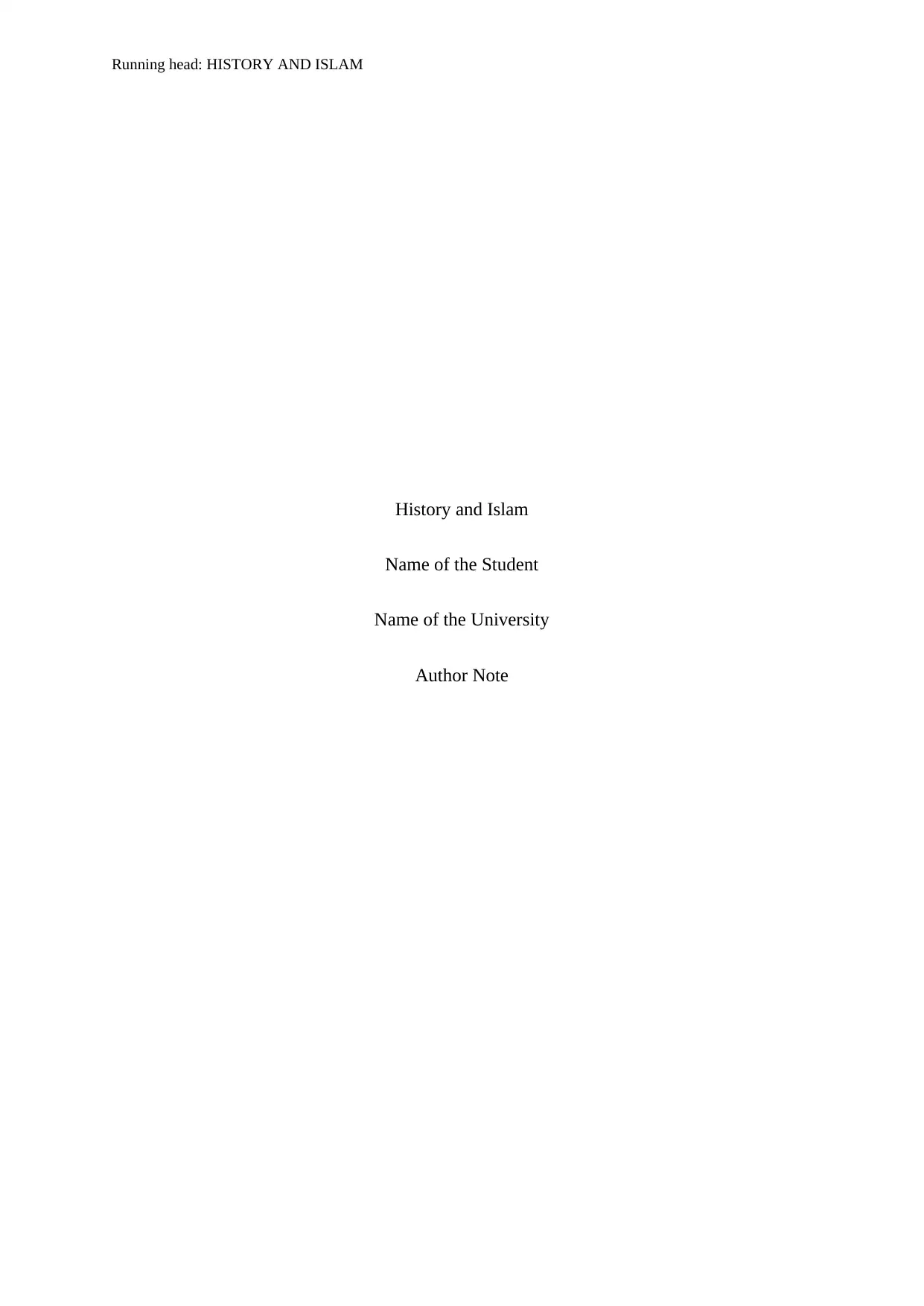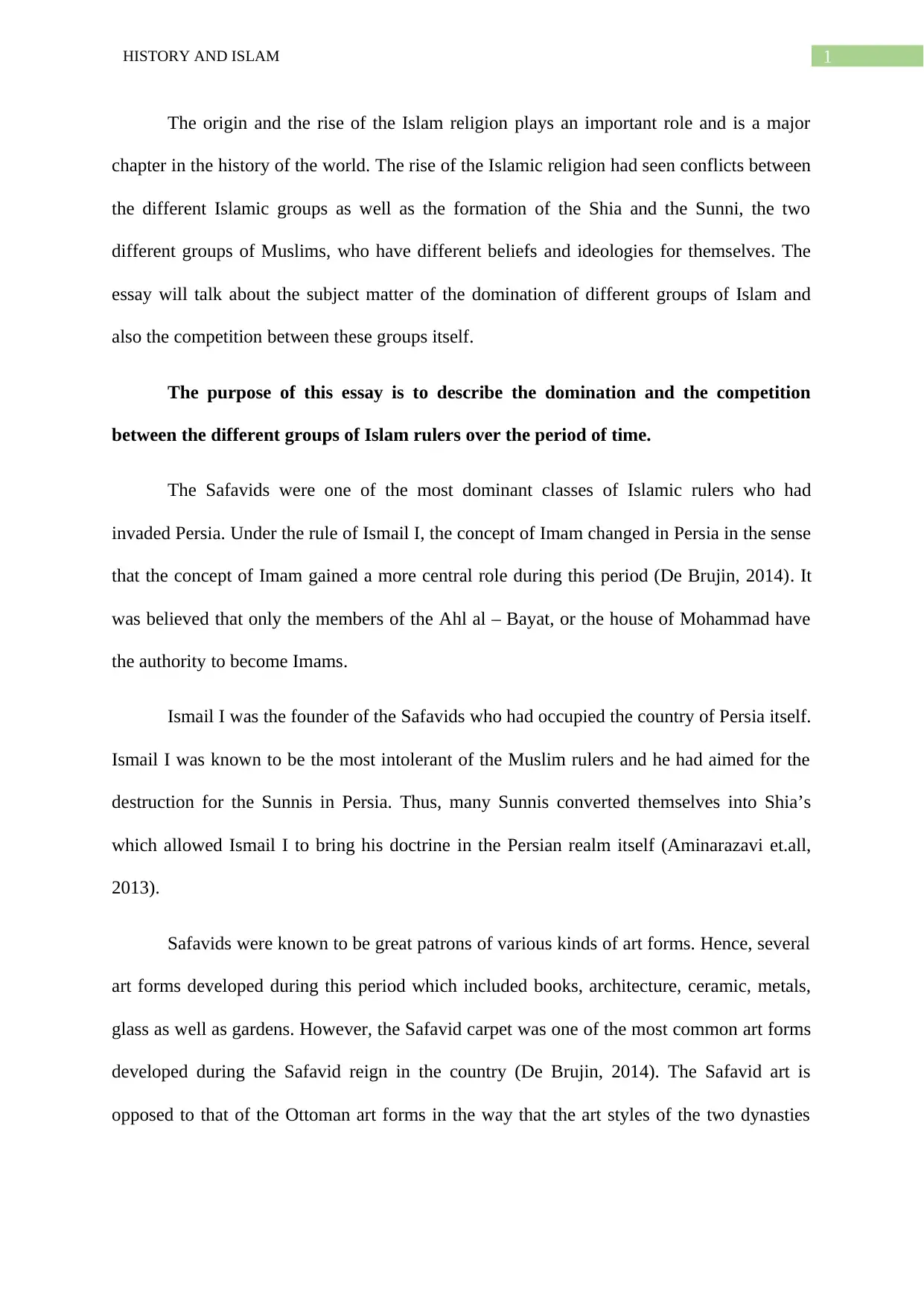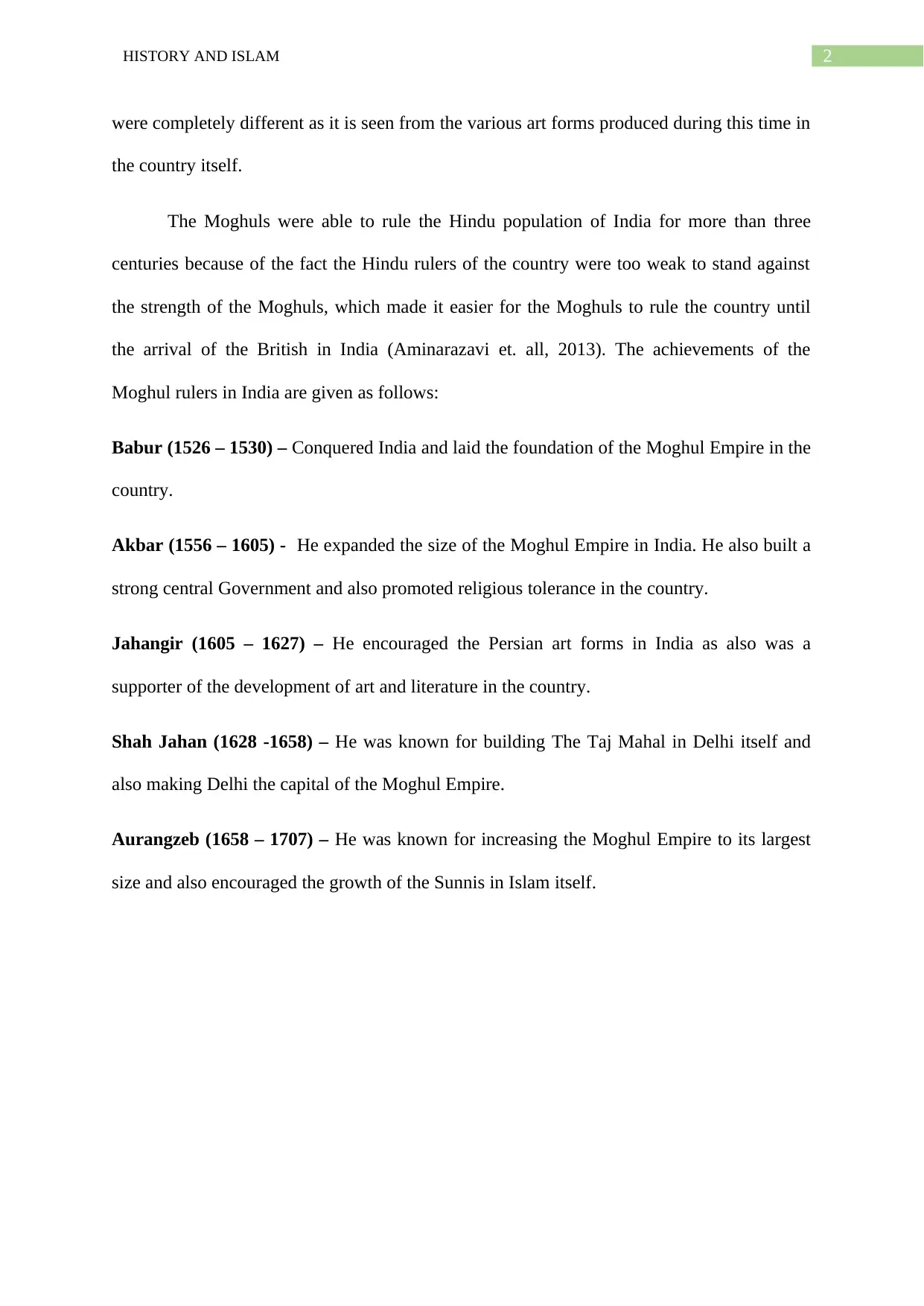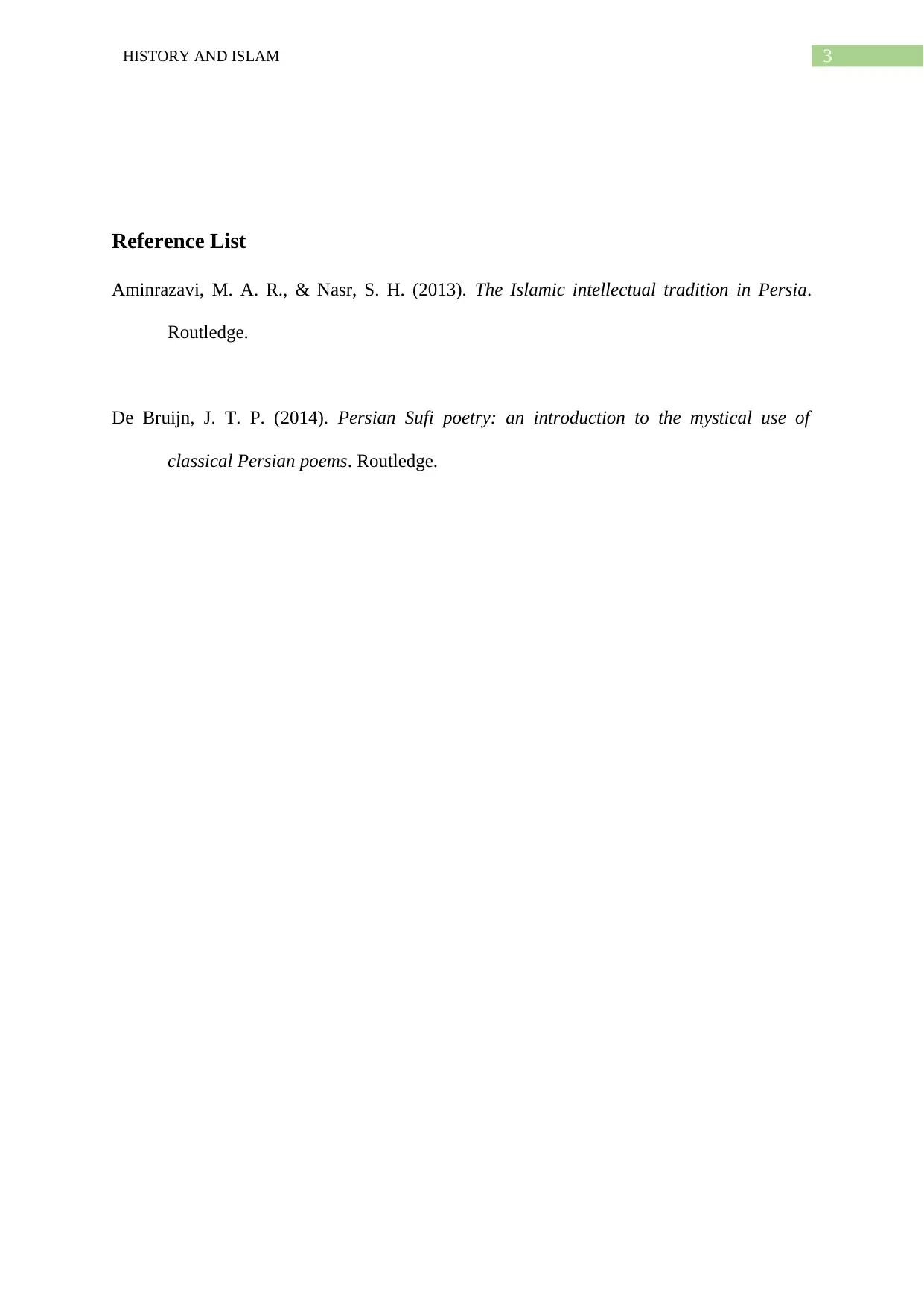History and Islam: Examining the Domination and Competition Dynamics
VerifiedAdded on 2022/12/01
|4
|687
|373
Essay
AI Summary
This essay delves into the history of Islam, analyzing the dynamics of domination and competition among different Islamic groups. It examines the Safavids, highlighting their rise in Persia, the shift in the concept of Imam, and their patronage of various art forms, including the distinctive Safavid carpet. The essay contrasts Safavid art with Ottoman art. Furthermore, it explores the Moghul Empire in India, discussing the factors behind their rule and the achievements of key rulers like Babur, Akbar, Jahangir, Shah Jahan, and Aurangzeb. The essay references the impact of the Moghuls on India, their contributions to art and architecture, and their approach to religious tolerance, providing a comprehensive overview of the historical context and the interactions between these influential groups and their impact on the regions.
1 out of 4











![[object Object]](/_next/static/media/star-bottom.7253800d.svg)